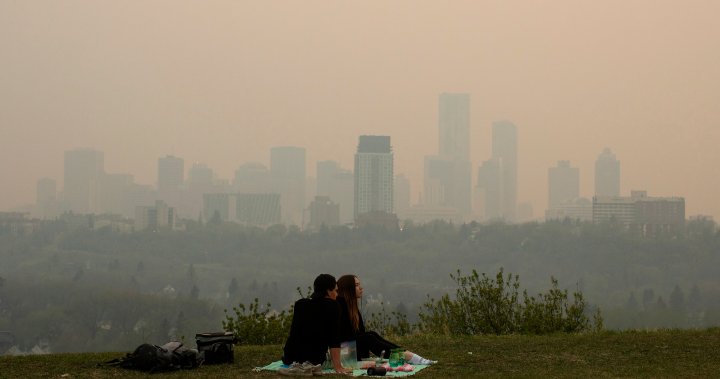Last year, Canada experienced a record-breaking wildfire season that led to hazardous levels of air pollution across the country. The Air Quality Health Index (AQHI) was closely monitored under hazy, orange skies that stretched beyond the Canada-U.S. border, but there were discrepancies in how it was calculated in different provinces, causing confusion for some individuals. Environment Canada has implemented changes to improve communication of air quality-related health risks to the public. These changes include enhancements to the weather.gc.ca website, such as the ability to view only air quality alerts, as well as issuing a new type of advisory to warn of worsening health effects on especially smoky days.
During last year’s wildfire season, Canada experienced the worst air quality in its history, surpassing even India, according to Celine Audette, manager of health and air quality forecast services at Environment and Climate Change Canada. To address this issue, Ontario and Alberta have adopted the federal government’s enhanced version of the AQHI, which measures levels of fine particulate matter (PM 2.5) in the air on an hourly basis. This change aims to provide a more accurate representation of air quality during wildfires and help prevent health issues. British Columbia also changed its AQHI calculation to reflect PM 2.5 spikes caused by wildfires, leading Environment Canada to adopt this model nationally.
The general health advice during wildfire season remains the same: everyone should pay attention to air quality advisories in their region and take precautions as needed. At-risk groups, such as those with respiratory or heart conditions, pregnant individuals, children, and the elderly, may feel the effects of smoke and air pollution even at moderate levels. It is recommended that they stay indoors as much as possible until the smoke dissipates and wear N95 face masks if they must go outside. Despite the potential health risks associated with air pollution, it is essential not to panic but to take proactive measures to reduce exposure and protect one’s health.
Sarah Henderson, the scientific director of environmental health services at the B.C. Centre for Disease Control, emphasizes the importance of putting Canada’s air pollution spikes into perspective. While it is crucial to reduce exposure to wildfire smoke, individuals should not panic and eliminate all other positive aspects of life. Henderson highlights that air pollution is just one of many risk factors that affect health, and it is essential to maintain balance in protecting oneself. Staying indoors all summer is not necessary for most people, and taking simple measures like wearing masks on smoky days can be sufficient to mitigate risks. Children can still engage in outdoor activities with appropriate monitoring, and individuals with chronic respiratory conditions should have a plan to keep indoor air clean, such as using portable air cleaners and high-efficiency filters. The goal is to reduce the distress caused by smoke and empower individuals to take control of their health during smoky periods.
As Canada continues to face challenges related to wildfire smoke and air pollution, it is crucial for individuals to stay informed, follow health advisories, and take appropriate precautions to protect themselves and their families. By understanding the risks associated with poor air quality and implementing practical measures like wearing masks, monitoring outdoor activities, and maintaining clean indoor air, Canadians can navigate through smoky periods with resilience and confidence. While the impact of air pollution on health cannot be underestimated, it is important to approach the situation with a calm and informed mindset, focusing on practical solutions to minimize risks and maintain overall well-being. With proper awareness and proactive measures, individuals can effectively navigate through periods of poor air quality and prioritize their health and safety.


